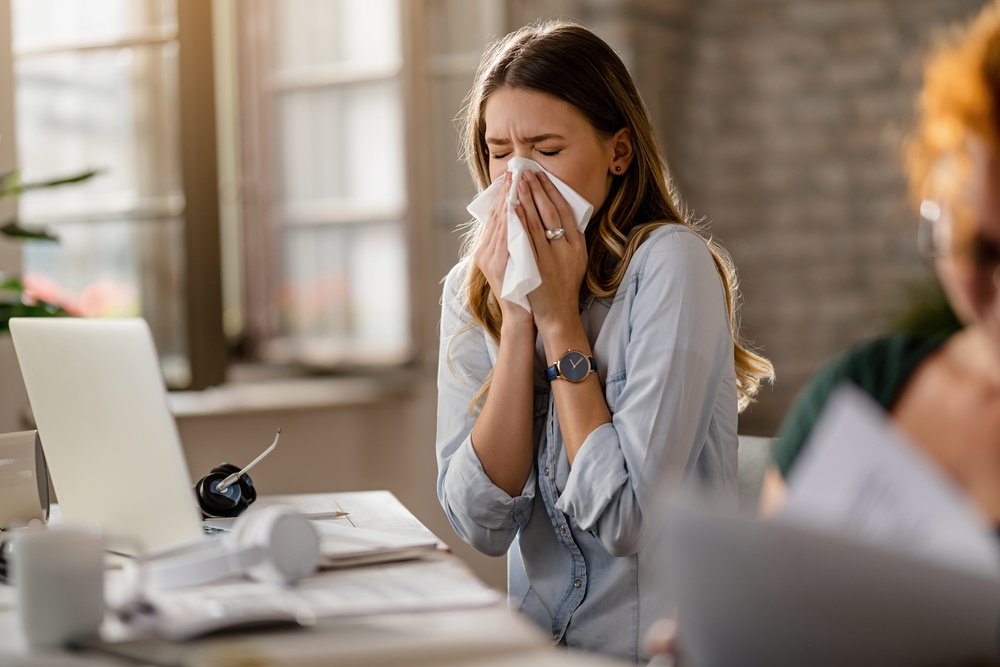It is that time of year again. With spring now fully entrenched in the northern hemisphere, flowers and grasses are blooming. That means pollen is in the air. Spring is one of the most uncomfortable seasons for allergy sufferers. So for commercial cleaners, minimizing discomfort is all about minimizing pollen exposure through daily cleaning routines.
The thing about pollen is that it is in the air. It cannot be completely avoided. But there are things cleaning companies like All Pro Cleaning Systems can do to minimize employee exposure to pollen. Let us talk about them here. The more you know about pollen and avoiding exposure to it, the more comfortable your employees with seasonal allergies will be.
Pollen and Regular Cleaning
We normally associate pollen with outdoor environments. Therefore, it’s easy to ignore pollen exposure when instituting regular cleaning regiments. But if you recognize that anything outdoors can be brought inside as well, you have reason to account for pollen in your daily cleaning.
High traffic areas are pollen hotspots. Think of entryways, first-floor hallways, warehouses, and loading docks. Also consider any areas in your building where windows and doors might be left open. If air can get into the building, pollen can too.
A daily cleaning regimen that accounts for pollen includes the following:
- Wiping Surfaces – Pollen can collect on all sorts of surfaces. Furthermore, you don’t need a lot of it to create an allergic reaction. Even a small amount can make for an uncomfortable experience among allergy sufferers.
- Vacuuming – Pollen is easily embedded in carpets. We recommend vacuuming with machines that can accommodate HEPA filters. The filters will trap pollen rather than sending it back out via the exhaust.
- Mopping Floors – Hard surface floors, like concrete and wood, invite pollen and dust. Both can be bad enough for allergy sufferers on their own. But combine the two and you have a real problem. Therefore, hard-surface floors should be mopped more frequently during allergy season.
One last thing to mention before moving on is that some seasonal allergy sufferers do fine in the spring. They struggle more during the mid-summer to late fall ragweed season. Unfortunately, ragweed pollen can be more difficult to control.
Other Strategies for Mitigating Pollen
Regular cleaning is just a starting point for keeping pollen at bay. There are other things cleaning companies can do, things that will both cut down on pollen exposure and make cleaning easier. At the top of the list is maintaining air filtration systems.
Your building’s HVAC should have a filtration system built in. Make sure the maintenance crew keeps ahead of it. The system should be regularly maintained, including changing filters as frequently as necessary to keep pollen at bay.
Another suggestion is to seal up all entry points. Take a look at windows and doors to make sure they are airtight when closed. Then keep them closed whenever possible. Preventing outside air from getting into the building will cut down on pollen considerably.
One last suggestion is to be careful about plants and other greenery in the building. Elect for low- or no-pollen plants that keep allergens to a minimum. If you don’t know the best choices for your space, get in touch with a professional cleaner who can help.
Diligence Pays Off
In closing, we want to remind readers that diligence pays off – not only in terms of reducing pollen exposure, but in all things cleaning and maintenance. Staying ahead of the game prevents small problems from becoming big ones. Diligence is certainly the key to making sure the allergy sufferers in your workplace are more comfortable.



